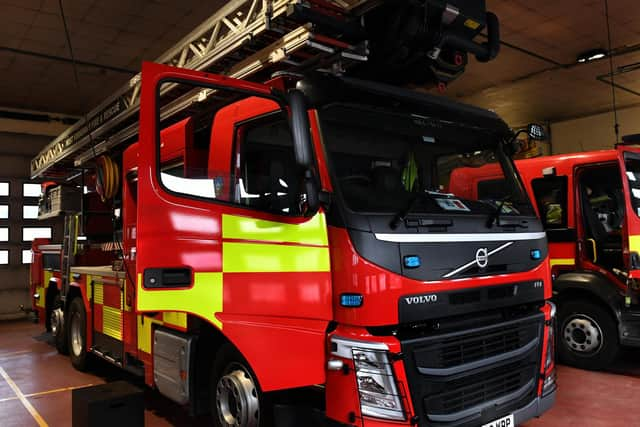"We are being left for longer as our houses burn" - fire crews in West Yorkshire taking longer to respond to emergencies than just over a decade ago
and live on Freeview channel 276
The Fire Brigades Union say a national slowing in fire response times is down to "huge levels of cuts" to services across England.
Home Office data shows that the West Yorkshire Fire and Rescue Service responded to primary fires – the most serious kind – in an average of eight minutes 28 seconds during the year to September 2021.
Advertisement
Hide AdAdvertisement
Hide AdIncluding one minute 29 seconds for call handling and five minutes 33 seconds drive-time, that is slower than in the 12 months to September 2020, when the average response time was eight minutes 20 seconds.


And the figures show that the response time had slowed since 2011, when crews attended primary incidents in around seven minutes 17 seconds.
That comes despite a drop in the number of call-outs to primary fires, which fell from 3,790 in 2011 to 2,710 last year.
Andy Dark, assistant general secretary of the FBU, said: "It is no surprise that response times are increasing – central government cuts are entirely to blame for this reduction in services and our communities deserve better.
Advertisement
Hide AdAdvertisement
Hide Ad"The Government is playing roulette with our lives and our properties. We are being left for longer as our houses burn."
Separate figures show that since 2011, the number of full-time equivalent firefighters employed by the service dropped from 876 to 543 last year – a 38 per cent fall.
And the brigade's overall staffing levels were down 37 per cent from 1,411 in September 2011 to 885 in 2021.
Staffing levels have dropped significantly nationally with brigades now employing 25 per cent fewer non-managerial firefighters and 22 per cent fewer total staff members than were in role in 2011.
Advertisement
Hide AdAdvertisement
Hide AdAcross England, the average response time for primary incidents – those which have most potential to cause harm to people or properties – is now 37 seconds slower than it was in 2010.
Last year, it was six seconds slower than recorded in the year to September 2020.
Fire Minister Lord Greenhalgh said thousands of firefighters had been recruited across the country in 2021 and that fire and rescue authorities would receive around £2.3bn to support their work.
He added: “Firefighters work tirelessly every day to protect our communities and the government has consistently given them the resources they need to keep people safe.
Advertisement
Hide AdAdvertisement
Hide Ad“Fire response times can fluctuate annually depending on many factors such as road traffic and weather but have remained relatively stable since March 2015.”
Support the YEP and become a subscriber today. Enjoy unlimited access to local news and the latest on Leeds United. With a digital subscription, you'll see fewer ads, enjoy faster load times, and get access to exclusive newsletters and content. Click here to subscribe.
